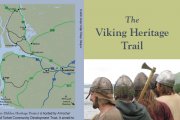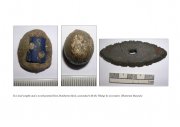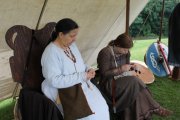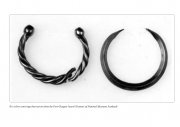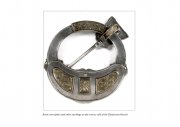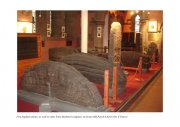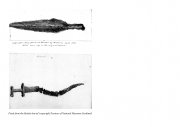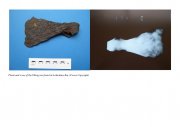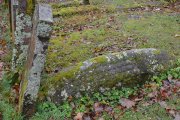Viking Research
The Vikings in Strathclyde
The Hidden Heritage project commissioned a report by Dr. Elizabeth Pierce (Glasgow University) to identify any Viking-related archaeological evidence in the area. Thanks to Elizabeth, this excellent report has now been completed, which you are welcome to download: Archaeological and historical evidence for the Vikings in Central and Western Scotland.
The Viking story in Strathclyde is summarised here, thanks to Katrina Johnson:
While archaeological evidence of Viking activity along the River Clyde and in the west of Scotland is rare, it does exist. This evidence coupled with historical documents provides us with an intriguing and exciting picture of the area’s Viking heritage.
Our story starts and ends with battle, but it is certainly not all fighting and warfare. During the year AD 870, the Annals of Ulster record that the Viking Kings of Dublin, Ivar and Olaf, laid siege to Dumbarton Rock at the mouth of the River Clyde. After four months, the Vikings succeeded in sacking the stronghold of the Britons and gained access to the early medieval kingdoms inland via Loch Long and Loch Lomond. Archaeological evidence of this part of our Viking story includes, two silver arm-rings found near Port Glasgow, two lead weights and a sword pommel found at Dumbarton Rock, a number of Northumbrian coins found near Paisley, and the magnificent Hunterston brooch. These smaller archaeological finds compliment the collection of large and entertainingly carved hogback stones at Govan Old Parish Church and tell us that some of these Vikings were wealthy and well settled around the banks of the River Clyde.
Our story moves northward as our Vikings settle around Loch Long and Loch Lomond to trade with central Scotland and establish an overland route to the east. The hogback at Luss marks part of this journey north as do a number of small objects of personal use and decoration dotted throughout this region. A number of these small objects were discovered in graves found in a small cemetery known as The Carrick. They tell us that as both women and children were buried here, our Vikings were settling in along the bonnie banks of Loch Lomond.
Now, after nearly 400 years of movement, trade and settlement our story again turns to blood and battle. King Hakon of Norway used the portage between Loch Long and Loch Lomond to raid inland and in 1263 fought the Scottish forces under King Alexander III at the Battle of Largs. While the Battle of Largs was indecisive, the death of Hakon shortly after brought to an end the Norse control of the Western Isles and Hakon’s desire to spread that control inland.
While this is the end of both our archaeological and historical evidence, we must remember that the doings of kings is not the whole story. Our Vikings likely blended well with the other cultural groups living around the Clyde and the lochs of western Scotland and their stories became interwoven in the hidden history of Scotland.
Based on this summary of Viking activity around the Clyde, we've produced a leaflet documenting sites with archaeological evidence of Viking activity. The leaflet includes a map, allowing you to drive the routes once travelled by the Vikings, and to read about what was found at the different sites. Leaflets can be picked up at the Three Villages Hall and at various other places, and a copy can be downloaded here (though it's not quite as clear as the printed version).
Blog
Click on the link here to check out our Facebook page.
Events
Click here to find out about forthcoming events and how to get involved.
Timeline
Click here to see our timeline of events.
Location
Click here to find out where the Hidden Heritage Project is taking place.
Contact Us
Click here for our contact details.


